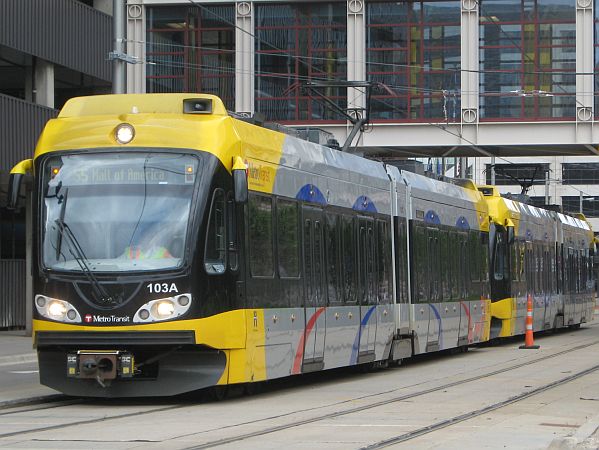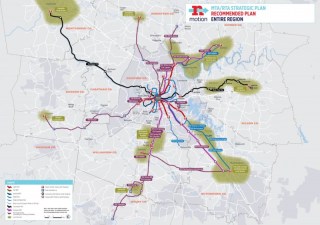Transit Planners to Congress: Please Figure Out How to Fund Us
To all but the most ardent transit wonks, the phrase "New Starts" sounds like a motivational tape sold on late-night TV. But those two words actually represent Washington’s predominant mechanism to pay for major transit expansions — everything from expanding an existing rail station to building a new bus line.
 Minnesota’s Hiawatha rail line is exceeding initial ridership estimates by 58 percent, according to the Twin Cities’ Metropolitan Council. (Photo: MN Public Radio)
Minnesota’s Hiawatha rail line is exceeding initial ridership estimates by 58 percent, according to the Twin Cities’ Metropolitan Council. (Photo: MN Public Radio)Since its inception in the 1970s, New Starts has provided states and localities with more than $10 billion. Unfortunately, the program has forced local planners to clear cumbersome bureaucratic hurdles in order to prove their projects’ cost-effectiveness while ignoring the economic-development benefits of transit.
During a Senate Banking Committee hearing yesterday, some of those planners sent an urgent message to Congress: Please fix New Starts.
"I can say with some certainty that if a mayor requested an additional station for a New Starts project today — a request that would improve the project through increased ridership and economic development — the result would be project delay and cost increases," Richard Sarles, executive director of New Jersey Transit, told the senators.
Actually, there was only one senator in the room: Robert Menendez (D-NJ), chairman of the Banking panel’s transportation subcommittee. Sen. Charles Schumer (D-NY) left the hearing after reading a brief statement on the importance of keeping federal transit funding high, providing a dismaying illustration of Congress’ lack of urgency on transportation issues despite the system’s imminent insolvency.
The low turnout didn’t impede a lively debate, however. Two shortcomings of the New Starts process were singled out as ripe for reform: the Federal Transit Administration’s (FTA) intense level of review for even smaller transit projects and the lack of consideration of economic development in evaluating funding pitches.
Mariia Zimmerman, policy director at the advocacy group Reconnecting America, said her recent research has found that several newly built transit lines are 15 years ahead of ridership estimates issued during the New Starts process. She questioned the effectiveness of the FTA’s existing ridership-prediction model, dubbed the Transit System User Benefit, given its poor track record at determining cost-effectiveness.
"It is interesting to note that some of these [successful transit] lines would not have ben funded if rated solely on their cost-effectiveness rating," Zimmerman said. Indeed, the Obama administration recently cleared Portland’s streetcars for $75 million in New Starts money that the Bush-era DOT had denied, citing a subpar cost-effectiveness rating.
Zimmerman suggested that Congress give states and localities more freedom to count private investment, such as the building of lower-income housing developments near new transit, as a match to help win New Starts money from Washington. Menendez appeared open to making housing construction part of the process, noting that Sarles’ Hudson-Bergen light rail network has generated $5 billion on that front alone.
Gary Thomas, president of Dallas Area Rapid Transit, had another suggestion for bringing New Starts ratings into the 21st century: Start accounting for the environmental benefits of extra transit. "In addition," he added, "the cost calculation should consider only the federal project cost — local sponsors should be able to add project features at their own expense without harming their cost-effectiveness rating."
Increasing transit’s overall share of the discretionary transportation budget — that is, creating transit funding outside of New Starts — was mentioned in written testimony but didn’t get much airtime at the hearing. As the federal transportation bill moves slowly towards reality, that subject may need to be dragged to the forefront.
